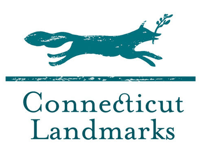 Client Mission
Client MissionConnecticut Landmarks’ mission is to stimulate interest in the past by engaging contemporary needs and building community around historic sites.
General Contractor: PAC Group
Structural Engineer: GNCB, Inc.
MEP Engineer: CES Consulting Engineers
Photographer: Erik Freeland
2014 AIA Connecticut Business Architecture Award (Under 50 Employee Category)
2014 AIA Connecticut People’s Choice Award (Your Favorite Place for Recreation)
Connecticut Trust for Historic Preservation Award of Merit
Connecticut Real Estate Exchange CREW CT Blue Ribbon Award (Outstanding Historical Project)






The birthplace of Nathan Hale, Connecticut’s state hero, this circa 1776 homestead is now a museum and historic education center on the National Register of Historic Places. Pirie Associates was engaged for the adaptive re-use of the existing Ell structure and adjacent landscape and exterior gathering spaces to house Visitor’s Services. Additionally, the project supports the educational charge of Connecticut Landmarks while enhancing the organization’s sustainability and vitality. It is the second phase in a multi-phase project for the site and has received several design and preservation awards.
Our first step for the project was to listen to the client’s needs and to dig deep into their assumptions. The client’s first thought for the Visitor’s Services Center was a new building attached to the site’s historic barns. Although interesting, our assessment was that this could lead to burdensome operating costs for the non-profit organization and it would have significantly increased the project budget due to very limited utilities in that area of the site. Additionally, the visitor experience of the homestead’s site would have been diminished, as the location of the barns would have placed the entry to the rear of the property.
We challenged the client to think differently, and suggested another approach: use the Ell. The existing Homestead had a pretty robust Ell that was significantly underutilized. An Ell is a telescoping addition that accommodates changing needs and marks the evolution and use of a building over time. This telescoping form would now house the 21st century uses of this historic homestead property.
The design solution was simple and tactical: where the existing exterior envelope was viable, the design approach was to insert the new program and finishes into the existing shell, revealing and refurbishing framing and other original and long-buried building elements. Where we encountered dilapidated features or lacking foundations, we removed the old and created new, telescoping volumes to house new functions. Finally, to address the Owner’s mission of maintaining and evolving the previous homestead vocabulary and volumes, the design maps historic elements to new uses: an ice house door became the Visitor’s Services entrance; a wagon shed opening became the restroom entrance; and the poultry shed vents became the restroom windows. Technically, the entire envelope was improved and systems were designed to reduce operational costs with the goal of creating a three-season site with a very limited operating budget and project cost.
The design of this adaptive reuse project moves the Owner’s organization forward as a focal point of American history and of contemporary community-gathering and spirit. Nearly 80,000 visitors annually are welcomed to the museum through the Visitor’s Services Center, including: over 3,000 regional elementary school children who experience historic tours and period-inspired, hands-on activities; revolutionary war encampments and re-enactments; and over 75,000 visitors to a nationally recognized Regional Farmers’ Market held on the grounds.
Want to learn more about this project?
Copyright 2025 Pirie Associates Architects. All Rights Reserved.